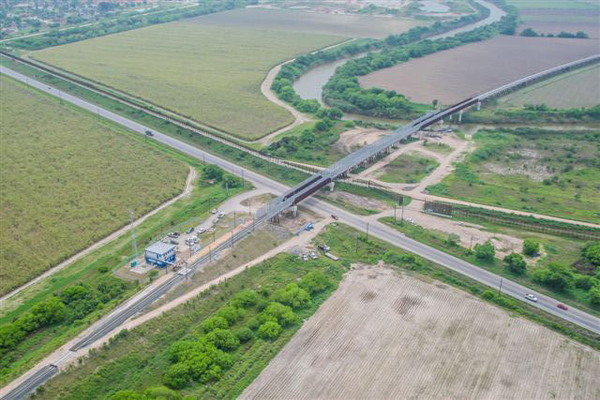- La Feria Community Holds Succesful Business Mixer Event
- Little Nashville to Take Place in Downtown Mercedes
- Lions Basketball Captures District Gold
- La Feria ISD Students Compete in Regional Chess Tournament
- Lions End First Half of 32-4A on a High Note
- La Feria ISD Held Another Successful Parent Conference
- Strong Appearance for Lions at Hidalgo Power Meet
- LFECHS Students Get to Meet Local Actress
- Students Participate in Marine Biology Camp
- Two LFECHS Students Qualify for All-State Band
Cameron County and Cameron County Regional Mobility Authority Leaders Near Completion on West Rail Bridge
- Updated: August 14, 2015

Cameron County Judge Pete Sepulveda, Jr., announced that on Friday, August 7th, the West Rail Bridge will become operational. Cameron County, the City of Brownsville and the Cameron County Regional Mobility Authority (CCRMA) have been working on the rail relocation project for the last fifteen years.
Judge Sepulveda stated, “This is a project that will leave a lasting effect on our community for many years to come. Providing this new link to move goods and services more efficiently is going to bring enormous advantages and opportunities to the consumer, the supplier and to markets throughout North America and the world”.
David E. Allex, CCRMA Chairman for the last ten years and an expert in logistics and economic development stated, “This project puts the Rio Grande Valley on the map. To have this new transportation artery that will help serve our region on both sides of the border is paramount to the success of the region. I know that we will be able to attract more investment to the region because of this project”
The West Rail Project includes the first new international rail bridge built between the United States and Mexico in the past 100 years and a 6-mile rail line on the U.S. side replacing the existing rail connection between Brownsville and Matamoros. The project prioritizes border security and includes X-Ray scanning machines, known as Vehicle and Cargo Inspection Systems, to scan rail cars for illicit cash, drugs and other contraband.
The project also improves safety, travel time and the free flow of legal trade between the U.S. and Mexico benefiting Texas jobs and economic opportunity. Fourteen at-grade rail crossings were eliminated in the Brownsville area, including some nearby school zones. Shifting rail traffic out of the congested areas will help speed the flow of legal goods moving between the two countries.
The entire project’s final price tag exceeded $120 million, with about $75 million of infrastructure investment on the Mexico portion of the project. The top imports and exports cross at this port of entry today include motor vehicle parts, commercial vehicles, fuels and landline and cellular phone equipment.


